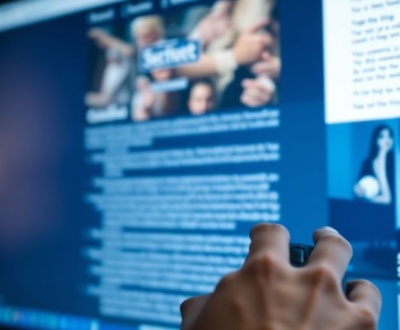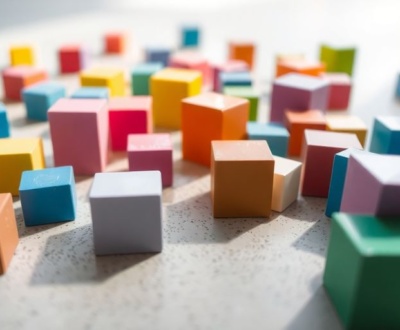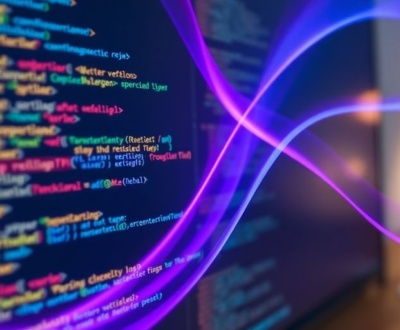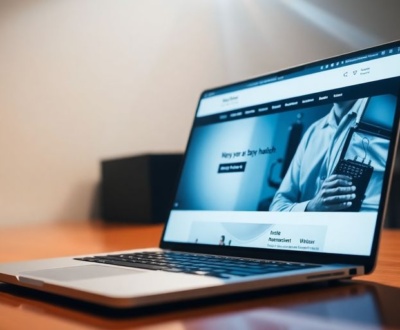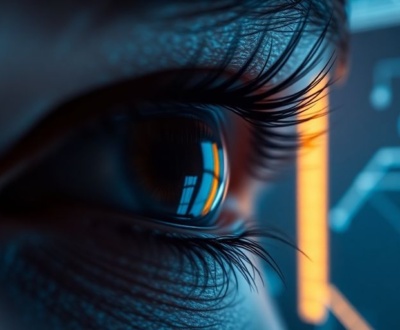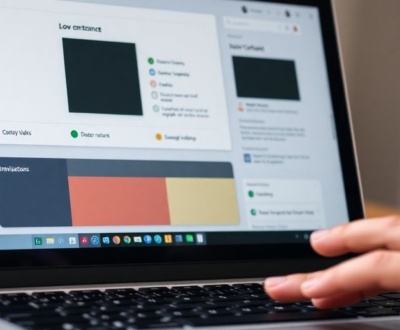AI is really changing how we make websites look good and work well. It can look at lots of information, learn from it, and then change things to make websites better. This means AI can help designers make sites that are more useful and efficient. It can also figure out what people like, change how pages are set up, and even make personalized experiences for visitors. Basically, AI-assisted layout tools are making web design easier and more effective for everyone.
Key Takeaways
- AI helps web designers by understanding what users like and how they act.
- AI-assisted layout tools can make design tasks faster and more automated.
- You can use AI website builders to create custom sites without needing to code.
- AI can make websites look better and be easier for people to use.
- The future of web design will likely include AI making pages that change for different devices and predicting what users will need.
Understanding AI in Web Design
Defining AI-Powered Web Design
Okay, so what is AI-powered web design anyway? It’s basically using artificial intelligence technologies to make the whole web design process smarter and faster. Think of it as having a super-smart assistant that can analyze tons of data, learn from it, and then help you make better design choices. It’s not about replacing designers, but giving them tools to be more efficient and creative.
- Automated layout generation
- Design assistance
- Personalized user experiences
AI in web design isn’t just a fad; it’s a real shift in how websites are built. It’s about making sites that are not only visually appealing but also super functional and user-friendly.
Analyzing User Behavior and Preferences
One of the coolest things AI can do is analyze how people actually use a website. It can track where users click, how long they stay on a page, and what they seem to be looking for. This data can then be used to make informed decisions about layout, content, and overall user experience. It’s like having a constant feedback loop that helps you fine-tune your design to better meet user needs. This is how you can improve conversion rates.
Automating Design Elements
AI can also automate a lot of the more tedious design tasks. Need to resize a bunch of images? AI can handle it. Want to generate different color palettes? AI can do that too. This frees up designers to focus on the bigger picture, like the overall strategy and user flow. It’s about making the design process more efficient and less repetitive. Here’s a quick look at some tasks AI can automate:
- Image optimization
- Content generation
- Layout adjustments
The Transformative Impact of AI on Web Design
Streamlining Design Workflows
AI is really changing how web designers get things done. It’s not about replacing designers, but more about helping them work smarter and faster. AI can automate a lot of the repetitive tasks that used to take up hours, like resizing images or testing different color combinations. This frees up designers to focus on the bigger picture stuff, like the overall user experience and making sure the website really reflects the brand. Think of it as having a super-efficient assistant that handles all the tedious work.
Enhancing User Engagement
Websites aren’t just static pages anymore; they’re interactive experiences. AI helps make these experiences way better. For example, AI can analyze how users are interacting with a site and then automatically adjust the layout or content to keep them engaged. Personalization is a big part of this. If a user always clicks on a certain type of product, the AI can make sure those products are featured more prominently. It’s all about making the website feel like it’s tailored specifically to each visitor.
Boosting Conversion Rates
Ultimately, a website needs to achieve its goals, whether that’s selling products, generating leads, or providing information. AI can play a big role in improving conversion rates. By analyzing user behavior, AI can identify areas where people are dropping off or getting confused. Then, it can suggest changes to the layout, the wording, or even the call-to-action buttons to make the site more effective. It’s like having a constant A/B test running in the background, always optimizing for better results.
AI is not just a tool; it’s a partner that helps designers create better websites, faster. It allows for data-driven decisions, personalized experiences, and continuous optimization, leading to improved user satisfaction and business outcomes.
Practical Applications of AI-Assisted Layout Tools
AI-Powered Website Builders
AI website builders are changing the game. They let you create a website quickly, even if you don’t know how to code or design. These platforms use AI to generate layouts and suggest design elements based on your input. Think of it as having a design assistant that works 24/7. For example, you can use AI web design tools to quickly launch a site.
- Quick setup: Get a site running in minutes.
- No coding needed: Perfect for beginners.
- AI-driven design: Get layout suggestions.
AI website builders are great for small businesses or individuals who need a website fast and don’t want to spend a lot of money on a designer.
Generative Design for Layouts
Generative design is where AI really shines. It involves using algorithms to create multiple design options based on specific goals and constraints. You input your requirements, and the AI generates a range of layouts. It’s like brainstorming with a computer. This approach can lead to innovative and unexpected designs that you might not have thought of yourself.
| Feature | Description |
|---|---|
| Multiple Options | AI generates many layout variations. |
| Goal-Oriented | Designs are created to meet specific objectives (e.g., conversion rates). |
| Constraint-Based | Designs adhere to predefined rules and limitations. |
Personalized User Experiences
AI can help you create websites that adapt to individual users. By analyzing user behavior, AI can personalize the layout, content, and design elements to match their preferences. This can lead to higher engagement and conversion rates. It’s all about making each user feel like the website was designed just for them. This is especially useful for enhancing user engagement.
- Analyze user data.
- Customize layouts.
- Improve user satisfaction.
Building Web Designs with AI-Assisted Layout Tools
AI is changing how we build websites. It’s not just about making things look pretty anymore; it’s about making them smart. Let’s explore how to actually use AI in your web design process.
Leveraging AI Website Builders
AI website builders are probably the easiest way to get started. These platforms let you create a website without needing to code. You basically tell the AI what you want, and it generates a design for you. It’s like having a designer in a box, but you still need to guide it. Think of it as a starting point, not the finished product. You’ll still want to tweak things to get it just right.
Integrating Natural Language Processing
NLP can be used to make websites more interactive. Imagine a chatbot that can actually understand what users are asking and guide them to the right information. Or a search bar that understands natural language queries, not just keywords. This makes the user experience much smoother and more intuitive. It’s about making the website feel more human.
Utilizing AI Image Generators
Need images for your website but don’t have a photographer or budget for stock photos? AI image generators can create unique visuals based on text prompts. You can describe the image you want, and the AI will generate it. It’s not perfect, and you might need to experiment with different prompts to get the result you want, but it can be a great way to get custom images quickly and cheaply.
AI image generators are getting better all the time. While they might not replace professional photographers entirely, they offer a great alternative for creating placeholder images or generating unique visuals for specific needs. Just remember to check the licensing terms before using any AI-generated image on your website.
Key Benefits of AI-Assisted Layout Tools
AI-assisted layout tools are changing the game for web designers. They’re not just about making things look pretty; they’re about boosting efficiency, improving the user experience, and ultimately, driving better results. Let’s take a look at some of the key advantages these tools bring to the table.
Increased Design Efficiency
AI tools can seriously speed up the design process. They automate a lot of the repetitive tasks that designers used to spend hours on, freeing up time to focus on the more creative and strategic aspects of their work. For example, instead of manually adjusting layouts for different screen sizes, AI can handle responsive design optimization automatically. This means less time spent tweaking and more time spent innovating.
AI-assisted layout tools can analyze design patterns and user preferences to suggest optimal layouts, color schemes, and typography. This not only accelerates the design process but also helps ensure that designs are aligned with best practices and user expectations.
Here’s a quick look at how AI can impact design time:
| Task | Traditional Time | AI-Assisted Time | Time Saved |
|---|---|---|---|
| Layout Adjustments | 4 hours | 1 hour | 3 hours |
| Content Placement | 2 hours | 30 minutes | 1.5 hours |
| Image Optimization | 1 hour | 15 minutes | 45 minutes |
Improved Visual Appeal
It’s not just about speed; it’s also about making things look better. AI can help designers create more visually appealing websites by suggesting optimal color palettes, font pairings, and image placements. AI algorithms can analyze trends and user data to identify design elements that are most likely to resonate with the target audience. This can lead to websites that are not only more attractive but also more effective at capturing attention and driving engagement.
Consider these benefits:
- AI-driven suggestions for color schemes that align with brand identity.
- Automated image enhancement to ensure visual consistency.
- Intelligent content arrangement for optimal visual flow.
Enhanced User Friendliness
Ultimately, the goal of any website is to provide a great user experience. AI-assisted layout tools can help achieve this by creating designs that are intuitive, easy to navigate, and accessible to all users. AI can analyze user behavior to identify areas where the design can be improved, such as simplifying navigation menus or optimizing the placement of calls to action. By focusing on user needs, AI can help create websites that are not only visually appealing but also highly functional and user-friendly. AI can even assist users with smart content generation to improve the overall experience.
Here are some ways AI enhances user-friendliness:
- Personalized content recommendations based on user behavior.
- Adaptive layouts that adjust to different devices and screen sizes.
- AI-powered chatbots that provide instant support and guidance.
Future Trends in AI-Driven Web Layout
Adaptive Layouts for Diverse Devices
The future of web design is all about adaptability. We’re moving beyond simple responsive design to layouts that truly understand the device they’re on. AI will play a huge role in this, predicting how users will interact with a site based on device type and tailoring the layout accordingly. Think beyond just resizing elements; imagine AI rearranging content blocks for optimal viewing on a smartwatch versus a desktop.
Predictive Design for User Needs
AI will soon anticipate what users want before they even know it themselves. This means layouts that dynamically adjust based on user behavior, past interactions, and even real-time data like location or time of day. For example, an e-commerce site might highlight different products based on a user’s browsing history and the current weather in their area. This level of personalization will require sophisticated AI algorithms that can analyze vast amounts of data and make accurate predictions.
Ethical Considerations in AI Design
As AI becomes more integrated into web design, it’s important to think about the ethical implications. Are we creating filter bubbles by showing users only what the AI thinks they want to see? Are we reinforcing biases through the data we use to train these algorithms? These are tough questions, and we need to have open conversations about them as we move forward. We need to ensure that AI-driven design is fair, transparent, and respects user privacy. It’s not just about making pretty websites; it’s about building a web that’s equitable and accessible for everyone. Consider the following:
- Data privacy and security
- Algorithmic bias and fairness
- Transparency and explainability
It’s crucial to remember that AI is a tool, and like any tool, it can be used for good or ill. It’s up to us, as designers and developers, to ensure that we’re using it responsibly and ethically. The future of the web depends on it. We can use AI tools to help with this.
Conclusion
So, what’s the big takeaway here? AI is definitely shaking things up in web design, and it’s not going anywhere. We’ve seen how it can help with everything from making layouts to giving users a more personal experience. It’s like having an extra set of hands, or maybe even a whole team, helping designers get things done faster and better. This means designers can spend more time on the really creative stuff, which is pretty cool. As AI keeps getting smarter, we’ll probably see even more amazing things happen in web design. It’s an exciting time to be involved in making websites, that’s for sure.
Frequently Asked Questions
What does AI mean in web design?
AI in web design means using smart computer programs to help create and improve websites. These programs can learn from data, understand what users like, and even make parts of the website by themselves. It’s like having a super-smart assistant for web designers.
How does AI help web designers?
AI helps web designers by making their work faster and easier. It can suggest good colors, fonts, and layouts, and even build basic website structures automatically. This frees up designers to focus on the more creative and unique parts of their projects.
Can AI make websites more personal for users?
Yes, absolutely! AI can create websites that change and adapt for each person visiting them. This means the website can show different content or layouts based on what a user has looked at before, making their experience much more personal and engaging.
What kinds of things can AI tools do for web design?
AI tools can do many things, like automatically arranging elements on a page, suggesting design ideas, and even generating images or text. Some AI website builders can create an entire site just from a simple description you give them.
What are the main benefits of using AI in web design?
Using AI in web design has many good points. It makes designing websites much faster, helps them look better and work more smoothly, and makes them easier for people to use. It also helps websites attract more visitors and turn them into customers.
What’s next for AI in web design?
In the future, AI will make websites even smarter. They’ll be able to change perfectly for any device (like phones or tablets), guess what users might want next, and even help designers make sure their creations are fair and responsible.
About this blog
We are a digital marketing company with a focus on helping our customers achieve great results across several key areas.
Request a free quote
We offer professional SEO services that help websites increase their organic search score drastically in order to compete for the highest rankings even when it comes to highly competitive keywords.


